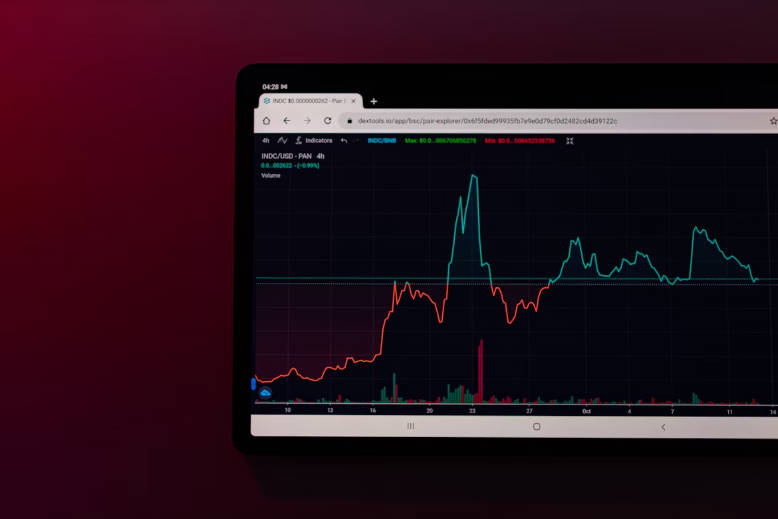A Forex Trading System is a disciplined, repeatable framework that specifies how to enter, manage and exit currency trades while controlling risk and adapting to market regimes.
Treating your trading activity as a system converts discretionary impulses into measurable processes and makes performance replicable.
This article will explain the system framework, market context mapping, concrete entry and exit rules, risk architecture, testing and optimisation practices, technology choices, behavioural safeguards, scaling criteria and common pitfalls.
Why a Forex Trading System Matters

Markets punish ad hoc behaviour. A Forex Trading System brings consistency to decision making, reduces emotional mistakes and provides objective criteria for evaluating performance.
Professional traders and institutional funds treat systems as operational blueprints. A robust system allows you to measure edge, manage capital and iterate with discipline.
Defining Your Forex Trading System Framework
A clear framework anchors all subsequent choices. Begin by documenting objectives and constraints. Your system should specify:
Trading objectives and time horizon, for example preservation, steady income or growth.
Preferred trading style, such as scalping, day trading, swing trading or position trading.
Universe of instruments, e.g. majors, minors, exotic pairs or cross rates.
Timeframes and session filters to focus on the most productive periods.
Concretely writing these choices down prevents mission creep and helps to evaluate results against explicit targets.
Market Context And Environmental Mapping For The Forex Trading System
Understanding the macro and micro environment is essential to avoid applying the same rules in inappropriate regimes. Components to include:
Macroeconomic drivers: interest rate differentials, central bank guidance and key macro data.
Liquidity and session effects: how different sessions (Tokyo, London, New York) affect spread and volatility.
Volatility regimes and market structure: recognise quiet ranges, trending regimes and sharp, news-driven moves.
Correlation analysis: how pairs correlate with equities, commodities and risk indices.
A system should include explicit regime filters so that signals are only executed when the environment matches the strategy assumptions.
Core Entry And Exit Criteria For The Forex Trading System

Rules must be precise and unambiguous. Ambiguity generates inconsistency.
1. Entry Rules
Define a primary signal (indicator cross, price-action pattern, volatility breakout).
Require one or more confirmation conditions (volume proxy, higher timeframe trend alignment, or session filter).
State the maximum latency permitted between signal and order execution.
2. Exit Rules
Preset stop-loss levels and reasons why they are placed at those levels.
Profit target rules or dynamic trailing stop logic.
Rules for partial exits and pyramiding, including positional caps.
3. Trade Management
Guidelines for moving stops to breakeven.
Conditions for adding to winners versus reducing exposure.
Procedures for halting trading after a sequence of losses.
Clarity here avoids discretionary adjustments which often undermine system expectancy.
Risk-Management Architecture Of The Forex Trading System
Risk design is the foundation of longevity. Define quantitative risk controls that govern everyday decisions.
1. Core Elements
Maximum risk per trade expressed as a percentage of equity.
Maximum daily, weekly and monthly drawdown limits expressed in both percentage and absolute currency terms.
Leverage ceilings and margin contingency rules.
2. Position Sizing Table
The following table summarises common position sizing methods and their practical implications for a Forex Trading System.
| Position Sizing Method |
How It Works |
Practical Consideration |
| Fixed Lot |
Trade the same lot size every trade |
Simple, ignores account growth or drawdown |
| Fixed Fraction |
Risk a fixed % of equity per trade |
Scales with account, sensible for compounding |
| Volatility Based |
Size adjusts to recent volatility |
Reduces size in volatile regimes |
| Kelly/Edge Based |
Uses statistical edge estimate |
Theoretically optimal, often too aggressive |
Use a sizing method that matches your risk tolerance, capital base and trading frequency. Fixed fraction or volatility based sizing are common pragmatic choices.
Back-Testing, Forward-Testing And Optimisation For The Forex Trading System

Testing distinguishes opinion from evidence. A disciplined test plan must be documented.
1. Data And Integrity
Use clean, tick or minute data for intraday systems and daily data for longer horizons.
Adjust for spreads, slippage and realistic latency.
Exclude survivorship bias and account for rollover/costs.
2. Back-Testing Procedure
Define the test period and out-of-sample validation window.
Track key metrics such as net profit, drawdown, Sharpe ratio and expectancy.
Document parameter ranges and avoid excessive parameter fitting.
3. Forward Testing
4. Back-Test Metrics Table
| Metric |
Why It Matters |
Threshold Example |
| Net Profit |
Absolute bottom-line performance |
Positive over multiple market regimes |
| Max Drawdown |
Capital preservation risk |
Below acceptable limit, e.g. 15% |
| Win Rate |
Frequency of profitable trades |
Contextual with R:R ratio |
| Expectancy |
Average return per trade |
Positive value required |
| Sharpe Ratio |
Risk adjusted return |
Higher is better; >0.5 useful |
Always interpret metrics in context; a high win rate with poor R:R is not necessarily attractive.
Automation And Technology Integration In The Forex Trading System
Technology choices influence how faithfully a system executes.
Decide whether to automate the entire system or retain manual oversight for entries or exits.
Select trading platforms and APIs that provide reliable pricing, fast execution and robust error handling.
Implement monitoring, alerts and fail-safes, such as maximum daily loss kill switches and connectivity checks.
Operational reliability includes logging every order and state so post-trade analysis and incident review are possible.
Behavioural Discipline And Psychological Components Of The Forex Trading System

Human factors can erode edge faster than markets.
Use the system as a behavioural scaffold to prevent revenge trading and overtrading.
Maintain a detailed trading journal recording rationale, emotions and execution anomalies.
Establish rules for pause and review after sequences of losses or wins.
Regular psychological review should be part of the system maintenance schedule to preserve objectivity.
Scaling And Adaptation Of The Forex Trading System
Scaling changes how the system behaves.
Define quantitative criteria for scaling up capital, such as consistent returns across 6 to 12 months and limited drawdown.
Assess liquidity constraints before increasing lot sizes or adding exotic pairs.
Build adaptation rules so the system responds to regime shifts rather than being rewritten impulsively.
A gradual, rule-based scaling plan reduces the risk of overextension.
Common Pitfalls And Mistakes When Implementing A Forex Trading System
Awareness of common errors shortens the learning curve.
Over-optimisation and curve fitting that perform poorly out of sample.
Ignoring transaction costs, slippage and execution latency.
Allowing discretionary overrides to erode systematic behaviour.
Trusting unverified third-party systems without independent testing.
Document mistakes and near misses; experiment within controlled settings to learn without jeopardising capital.
Conclusion
A Forex Trading System is both an intellectual design and an operational practice. Success requires a clear framework, rigorous testing, ironclad risk rules, honest performance review and disciplined execution. Build conservatively, test thoroughly and scale systematically. The system is the product; individual trades are the experiments that validate it.
Frequently Asked Questions
Q1. What is the difference between a trading system and a strategy?
A1. A trading system is a structured framework defining rules for entries, exits, risk management, and overall process. A strategy is a specific method or technique for executing trades within that system, focused on generating profitable opportunities.
Q2. How many currency pairs should I include in my system?
A2. The number of currency pairs depends on capital, trading experience, and time available. It is best to start with a small set of pairs you understand deeply, gradually expanding once your system proves reliable and manageable.
Q3. Do I need to automate my forex trading system?
A3. Automation is not mandatory, but it improves consistency, speed, and removes emotional decision-making. Manual trading can work, yet automated systems help enforce rules, manage multiple trades efficiently, and maintain discipline, especially in high-frequency environments.
Q4. How often should I review or optimise my system?
A4. Systems should be reviewed regularly, typically monthly or quarterly. Deep reviews should align with changing market regimes, economic cycles, or notable performance deviations, ensuring the system remains robust, relevant, and continues to operate within defined risk parameters.
Q5. Is a high win rate the most important metric for the system?
A5. High win rates alone do not indicate system quality. Risk-adjusted returns, drawdowns, risk-to-reward ratio, consistency, and expectancy are more critical for evaluating performance. A system with moderate win rate but strong risk management can still be profitable.
Q6. Can I rely solely on a published "proven" forex trading system?
A6. Caution is required when using published systems. Many are untested, curve-fitted, or unsuitable for your capital and risk tolerance. Always backtest, paper trade, and ensure the system aligns with your objectives, style, and risk management before live deployment.
Disclaimer: This material is for general information purposes only and is not intended as (and should not be considered to be) financial, investment or other advice on which reliance should be placed. No opinion given in the material constitutes a recommendation by EBC or the author that any particular investment, security, transaction or investment strategy is suitable for any specific person.






























